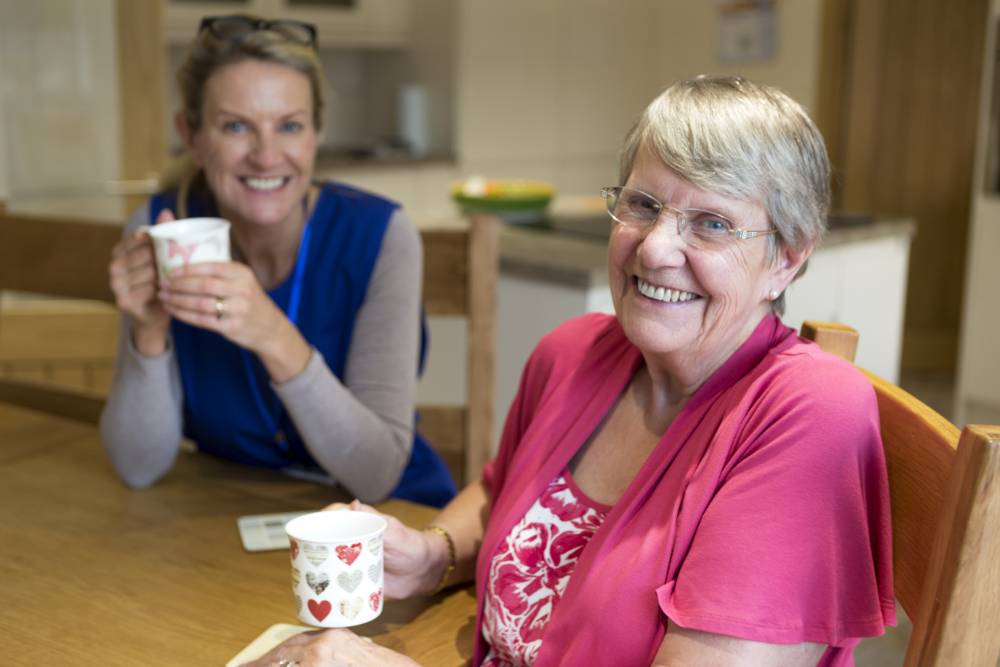
There are telltale signs for all human emotions, but describing what happiness looks like goes a lot deeper than a person’s facial expressions.
It can be a vibrancy to the way in which they move, it can be a willingness to interact, it can be the tone in which they speak, and of course, it can be the warmth that radiates from the smiling face of a person who simply can’t contain their joy.
Genuine smiling faces are powerful because they have the ability to influence other people’s emotions, and any environment in which these types of smiles can be found on a regular basis, is an environment that people want to be a part of.
Aged care homes are a unique working environment, as staff and residents coexist in a space that is far more like a shared community than a place of business – and just like any space where large numbers of individuals spend time together – every individual’s mood has an effect on the overall atmosphere.
Findings from a study conducted by Research Matters, under the leadership of Dr. Sarah Russell, are showing that the staff who work in good aged care homes are proud of their work, and while there are a number of different reasons that can be attributed to staff morale, one recurring theme is the sense of enjoyment that staff feel from knowing that their residents are happy.
Over 40% of the staff members surveyed for the research said that they felt enjoyment from spending time with residents and having meaningful conversations, while others singled out things like ‘making residents feel happy’ and ‘making a difference’ as the things that they enjoyed most about their job – all of which are best highlighted by words from the staff who took part in the survey themselves.
“I treat my residents the same as I would treat my own mum and dad if I still had them… I love them like family. They are my family.”
“I like to think I make a difference in their day, by giving them the care they deserve, giving a hug or just listening.”
“Making residents feel happy and important, to see a smile on their face, is gold.”
The quality of an aged care home is dependant on the quality of life being experienced by its residents, which is what makes the link between good aged care homes and happy staff such a stark indication that great working environments equal better care outcomes for aged care residents.
There have been numerous studies over the years that highlight the fact that people who are happy in their job are more likely to work to a higher standard and go above and beyond. With this in mind, the importance of employee happiness in aged care is impossible to overstate.
From a clinical aspect, staff that are more attentive and thorough in their duties have an increased likelihood of identifying changes in residents needs, which allow facilities to take a proactive approach to potential issues.
Happy staff members are also friendlier, and interacting with happy people on a daily basis creates an atmosphere that promotes meaningful engagement which can combat issues like social isolation, that currently plague elderly people all around the globe.
Staff members who are happy in their jobs are also far less likely to leave, and less staff turnover means that residents spend longer periods of time interacting with staff members who understand their history and their needs.
Good management was also flagged as one of the key contributors to staff happiness within the research, as one of the participant’s descriptions of their aged care facility indicated an extremely positive workplace culture.
“A happy place, we have a good manager, most staff are very caring. Beautiful location!”
When most people think of cycles of behaviour, quite often, the first thoughts always seem to be associated with negatives, but one thing that this research illustrates quite clearly is that the flow-on effect from having aged care workers that feel happy is a cycle of happiness that flows between staff and their residents which results in better outcomes for everyone involved.
And if you ask most people – having the happiness of elderly people fueling the enjoyment of aged care staff – sounds exactly like what all aged care should strive to be.
An inspiring article ..